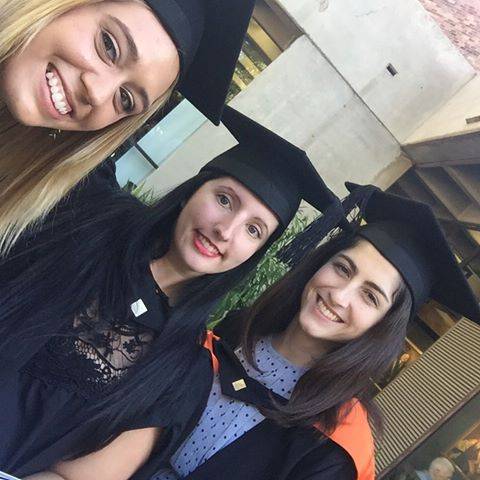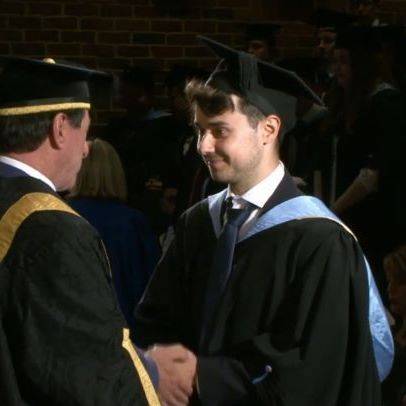沟通之前:希望您能花,三到五分钟的时间,观看我们的视频,对我们的能力,有一个初步判断。
密歇根理工大学毕业照展示

凯尔·贝克为Varsity撰文指出,新的分析表明,尽管英国获得了自千年以来第二高的诺贝尔奖得主,但美国机构在获得诺贝尔奖数量上远远超过了英国竞争对手。
自2000年以来,英国学者获得了12项诺贝尔奖,仅次于美国学者,他们获得了146项奖项中的71项。
这些数据还概括了本世纪在获得世界著名奖项方面最成功的国家和高等教育机构。
据《泰晤士报》高等教育排名编辑菲尔·贝蒂(Phil Baty)说,这些国家是“一个警告信号”,应该标志着一些im一些预兆性的问题,包括“……一系列资金削减和日益壮大的短期主义和目标设定文化所营造的独特压力氛围,是否正在损害我们的学者们真正找到大思考的空间的能力”。
校外网站全面报道

For the first time in decades, Nigeria’s National Universities Commission set up a committee to visit all federal and state universities and undertake a forensic audit. It found widespread problems including poor staffing, underfunding and weak infrastructure.On the basis of the committee’s assessment, which was completed late last year, stakeholders are putting pressure on the government to wake up to its responsibilities and transform public universities into 21st century centres of learning anchored in the knowledge economy. The Committee on Needs Assessment of Public Universities in Nigeria comprised Professor Mahmood Yakubu and senior colleagues drawn from various universities. They were mandated to take a critical look at universities. Their most important achievement was the publication of the latest statistics and a description of the university landscape that touched on every aspect of higher education.The panel shone an investigative spotlight on 27 federal and 34 state universities. It did not visit 10 recently created federal and three new state universities. The Nigerian public now knows that there are 74 public universities: 37 of them federal and 37 state institutions.Of these, 53 institutions – 26 federal and 27 state – are conventional universities. The rest are specialised and include 13 universities of science and technology (five federal and eight state), two universities for the armed forces and police, and one federal petroleum university. The panel found that there were some 1.2 million students in all public universities: 85% of them undergraduates, 5% sub-degree, 3% doing postgraduate diplomas, 5% masters and 2% PhDs. Around 57% of students were male and 43% female.Poor infrastructureThe committee found that many lecturers, including professors, shared offices that were dilapidated and poorly furnished. Lecture theatres were overcrowded and classrooms, laboratories and workshops were shared by many programmes across different faculties. The panel singled out the deplorable state of most classrooms – the fundamental teaching infrastructure of any learning institution.“Classes are held in improvised open-air sports pavilions, and old cafeterias and even uncompleted buildings are used for lectures. In some cases, workshops are conducted under corrugated sheds or trees,” said the committee in its assessment.The heavy pressure on facilities was “mainly due to unplanned expansion of programmes”.The panel discovered that fewer than one in 10 universities had video-conferencing facilities, less than 20% made use of interactive boards, “and even the ones that are deployed are found in less than 10% of lecture rooms and theatres”. Fewer than half of universities used public address systems in lecture halls.“Internet is non-existent, epileptic or slow,” the committee report said. Furthermore, “library resources are outdated and manual. No university is fully automated. Less than 35% are partially automated.”Shortages of academicsThe perennial problem of having enough academics to teach an ever-growing student population was closely examined. This was expected, because almost all members of the panel are experienced academics who have endured lecturer shortages.There are currently 37,504 academic staff in Nigerian public universities, 83% of them men. Of this number, 23,030 (61%) are employed in federal universities while 14,474 (39%) teach in state-owned universities.The number and distribution of teaching staff across the country, by qualification and rank, indicated that Nigeria’s university system was experiencing a staffing crisis. This had led to a situation where some universities relied heavily on part-time and under-qualified academics. The report also indicated a growing disparity in the ratio between teaching staff and students. For example, at the National Open University the academic-to-student ratio was 1:363, at Lagos State University it was 1:144 and at the University of Abuja it was 1:122.There were insufficient numbers of professors holding PhDs, and a number of universities had become increasingly dependent on visiting lecturers and ‘inbred’ academics, which the panel said was counter-productive. It found that only around 43% of academics had a PhD and only seven universities had up to 60% of lecturers with a doctorate. While 75% of academics were expected to be in the ranks of senior lecturers and professors, only about 44% were.The committee singled out three universities for special mention in terms of very poor academic staffing. “Kano State University, which is 11 years old, has only one professor, and 25 lecturers with PhDs. Kebbi State University has two professors and five lecturers with PhDs. And 74% of lecturers in Plateau State University are visiting lecturers.” Responses The National Universities Commission and the Committee of Vice-chancellors have yet to respond to the committee’s findings.However one vice-chancellor, who did not want to be named, congratulated the panel on its thorough job. “The crisis facing our university system can be solved if, among other things, the federal and state governments increase considerably the funding of public universities. “This is a knowledge-driven century. Nigerian universities can help drive the Nigerian economy by creating qualified manpower only if they are adequately funded,” he said.
